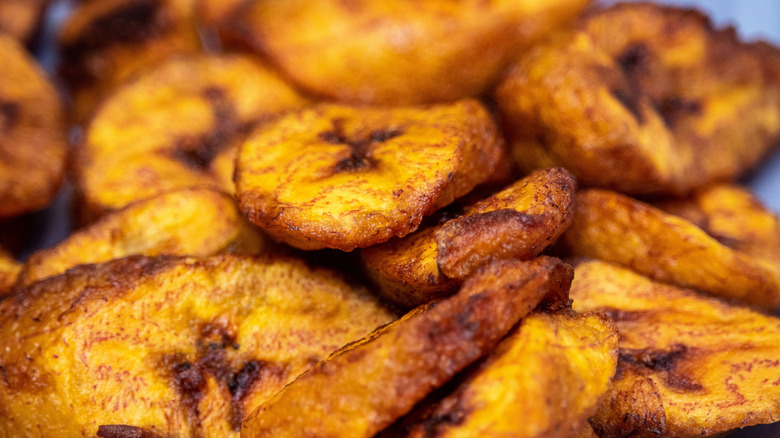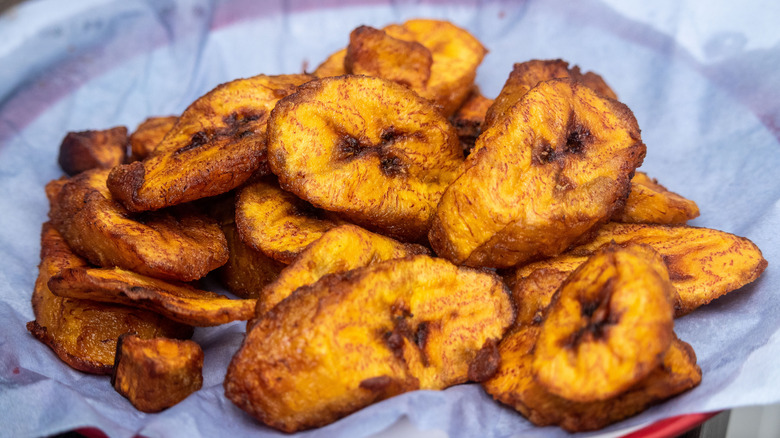What You Didn't Know About Plantains
Plantains are a sweet and savory treat that's perfect to eat anytime of the day. They also taste delicious whether they're made warm, soft, or crunchy. They are truly versatile. But what you may not know is that there is a difference between plantains and bananas, even though they look very similar. However, plantains do belong to the Musaceae, which is the banana family of plants and is native to Southeast Asia.
Unlike bananas, plantains are very difficult to peel and have a starchy taste, which means you wouldn't want to use them to make banana bread. That's also why you'll often see plantains being fried or boiled to give them a sweet flavor. But both plantains and bananas have vital nutrients we need, according to Healthline. They both contain potassium, magnesium and vitamin C. If you're trying to watch your calorie or carb intake though, you may want to choose a banana instead. A half a cup of plantains will set you back 116 calories, while bananas are only 89 calories. Carb-wise, plantains have 31 grams, compared to 23 grams of carbs in bananas.
So what exactly are plantains and how do you cook them?
Although they are cooked like a vegetable, plantains are actually considered a fruit. Plantains can also be cooked at all stages of ripeness, making them great for a lot of dishes. The sweet treat is often found in entrees from Central and South America, the Carribean, Africa and Southeast Asia.
If you want to attempt to cook plantains, Bon Appétit recommends cutting the fruit from one end to the other to remove the peel. Then you'll need to pull off the skin bit by bit, since it's not easy to peel like a banana. If you're looking to make something salty and delicious, try cooking plantain chips. To make these, you'll need to fry thin slices of the plant when it's in the green stage of ripeness. However, if you're trying to make crispy tostones, you'll use bigger circular cuts of plantains. Green plantains are also ideal for a dish called mofongo, which involves mashing the plant and adding garlic, olive oil and fried pork skin.
Seems as though the options with this fruit are truly endless!

